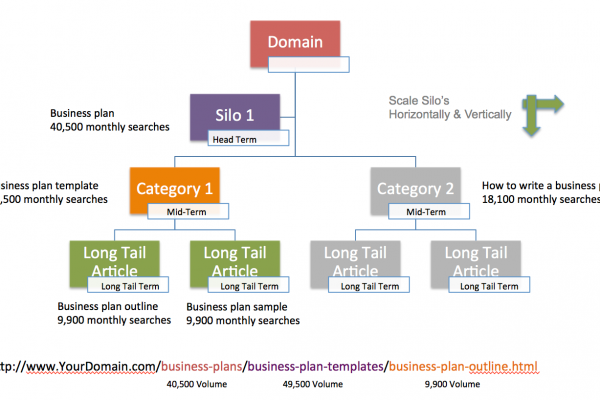Content Silos & Organic Growth
SEO, Organic Growth, Keyword Research, Analytics, Article writing, Social media integration
View Silo Structure: Suite Marine – Things to do in Puerto Vallarta
View Silo Structure: Suite Marine – Things to do in Puerto Vallarta
The word “silo” describes a large storage area, in this case a large storage of content. The purpose of the content silo is to become a reference on a given subject which is developed around a keyword. Over time, a well-structured content silo should gain traction in rankings because is appears as a “wiki” on a keyword which is relevant to search results. Silos build authority through internal linking and potential external backlinking from other sites. In effect, the higher the quality in the content silo, the more traffic it should attract. With higher authority come higher ranking and higher traffic. This is one method to grow “organic” traffic for search engine optimization.
This is opposed to paid traffic with ads on AdWords or Facebook ads. Most experts agree that a strong SEO strategy should include some organic traffic for the long term growth of a website. It does cost to set up initially, but the long-term benefits of having a content silo consistently attracting traffic are huge.



The concept of building content silos has been around a while. Most silos have 1 main big page with many subpages linked to them. Good linking between the main page with the main keyword and the subpages helps direct viewers to their desired information and also helps search engines register your site maps as relevant information. The diagram below visualizes a typical content silo structure. Website Content Developer has tweaked this strategy and added some extra content tactics which we have developed from project to project. When appropriate free traffic can be driven some social media which helps to get the ball rolling as the silo is being developed.
In this example, with the website Suite Marine, we focus in on keywords about the location of Puerto Vallarta. Content silos build around low to medium ranked keywords, short or long-tail keywords can be established between 3 to 8 months. Websites with content silos should start to SERP’s (Search Engine Ranking Position) start to improve a few months in. It’s important for our clients are realistic about the time frame and to commit to the process. So having an example like this is very useful.
Our process starts with keyword research which then structures the silo linking structure. Then each page and subpage is researched and the copy is written, images found and any additional multimedia added. The more rich content such as infographics, video or images that are added the better the page is seen by search engine bots. Additionally, viewers of the information will appreciate the quality and have a higher probability fo sharing quality information elsewhere.
When the silo is complete we like to go back to the start and re-edit it. We make improvements and consider user experience. UX (user experience) is an increasingly important factor with ranking and generally reflected with the website “bounce rate”provided by analytics. If users are spending longer times reading the content of a website then search engines index this positively. We add section images which visually deliver an overview of each section. These images can be used on social media and elsewhere to drive traffic.